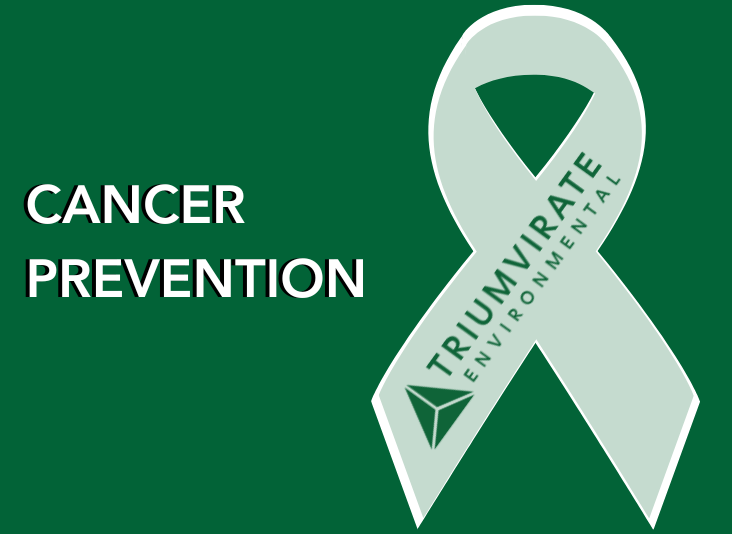Cancer Prevention: Safety Best Practices Keep Employees Healthy
February was 2024’s National Cancer Prevention Month. Now is the time to consider best practices to help better protect employees from cancer-causing hazards in the workplace.
Cancer, in its various forms, has many vectors in labs, factories, and other workplaces across industries—but best practices exist to help mitigate risk. In fact, in the United States, experts say that up to 50% of cancers are avoidable with proper lifestyle.
To achieve cancer avoidance, workers across industries must remain vigilant of workplace carcinogens. As part of this, they must also actively understand the ever-evolving threat of cancer and actively protect themselves—and their team members.
Workplace Cancer: Major Hazard
Cancer is the second-leading cause of death worldwide, claiming 10 million lives each year. In the United States alone, this amounts to over $1.1 trillion in annual economic cost. Sadly, nearly everyone has been affected by the disease in some way—either as a victim themselves or by knowing someone else who has been.
Occupational cancers can affect just about every essential system and organ in the body, including the skin. It is most likely to attack:
- Lymph nodes
- Bones
- Brain
- Liver
- Lungs
According to the Dana-Farber Cancer Institute, 5% to 8% of all cancers worldwide are caused by exposure to workplace carcinogens. Cancer especially afflicts workers in specific fields such as mining, construction, and manufacturing. Across the board, exposure to various carcinogenic chemicals and substances (like asbestos) increases the risk that someone will become ill.
Disease Course of Attack
Once it takes root in a patient, cancer forms tumors that cause many life-threatening conditions. Intermediate results of cancer include:
- Damaged blood vessels
- Organ shutdown and damage
- Decreased blood flow and blood oxygen content
Cancer can completely debilitate its victim and cause death. That is not to forget about its emotional impact—while the diseased body sickens, feelings of loss, sadness, and depression frequently set in for both the patient and their family and friends. Together, these symptoms ruin quality of life.
The Many Workplace Carcinogen Vectors
For most people, there are many ways cancer can be contracted—exposure to the sun, exercise avoidance, and smoking, to name a few. That can make it easy to overlook the carcinogenic threats they face daily at their workplace in the office, lab, or production facility. Workplace cancer risk often increases when workers face:
- Direct contact with cancer-causing materials, such as welding fumes, asbestos, or carcinogenic chemicals. These substances can directly cause cancer when they are inhaled, absorbed through the skin, or otherwise ingested. Cancer-causing materials often have short-term health effects and over time they can damage DNA, allowing cancer to grow.
- The presence of unfiltered/untreated air in carcinogen-dense environments. This risk applies particularly in places such as:
- R&D labs or technological facilities
- Auto, marine, or machine repair shops, both civilian and military
- Construction or maintenance sites where there is dust, contaminated soil, or other materials
Without proper ventilation, air monitoring, purification, and masking, such worksites can be extremely hazardous. A lack of protection can force workers to respirate chemically contaminated air, leading to inflammation, blood vessel growth, DNA repair defects, and suppressed immune response—all of which can eventually result in cancer.
- Overwork, from too long or too strenuous hours on the job. While work stress or strain does not directly cause cancer, it can impact immune response and overall bodily health. This can increase cancer risk—all while reducing the body’s ability to fight the disease.
Defeating Workplace Cancer Before It Can Start
Fortunately, as discussed above, there are ways to protect yourself, your team, and your facilities from all types of cancer. These methods are not foolproof—sometimes, doctors do not know what causes the disease. Regardless, it is a good best practice to protect health and wellbeing through:
Distribution of Appropriate Personal Protective Equipment (PPE)
PPE is the first step to ensure workplace cancer prevention—if the PPE type matches the hazards the worker will face. This can mean the difference between health and illness.
Each workplace task should be analyzed to determine the appropriate PPE levels and foster safety and protection. This could mean, for example:
- Gloves when dealing with mild chemicals
- Air purifiers and/or air purifying respiratory protection, and ventilation when chemical fumes are present
- Safety goggles when chemicals are being poured, mixed, or have the potential to splash
Implementation of Safety Policies and Procedures
Every organization should have a robust safety committee (or some similar team) for risk evaluation across the entire organization or facility. This team should also identify best practices to mitigate risk—and then implement them thoroughly until all employees are protected from cancer-causing (and other) harm.
We speak from experience here. At Triumvirate Environmental, for example, we ensure:
- The most appropriate risk management policies and procedures are in place, designed to best manage risk
- Complete training programs that help employees evaluate, recognize, and control workplace hazards
- All relevant engineering, administrative, and other hazard controls are in place to best protect employees
- Proper PPE is provided (respiratory protection, skin protection, etc.)
- Employees have access to professional medical advice, as needed
Direct Promotion of Physical Well-Being
Management should also consider providing physical fitness resources to keep team members in top shape. Such programs could include:
- Creation of corporate gyms
- Health club memberships
- Access to personal training, health, and nutrition coaching
- Complete and thorough medical insurance policies
- Corporate recreational teams and events
Managers should continually educate their team members about all the available physical wellness policies and urge them to take full advantage of these resources. Workers’ own lives may depend on it.
Partnering for a Cancer-Free Workplace
Interested in learning more about safety best practices or implementing an anti-cancer safety program in your facility? Contact Triumvirate Environmental today. Our expert team of staff can ensure your employees are safe in the workplace—and help to crush workplace cancer risk.






